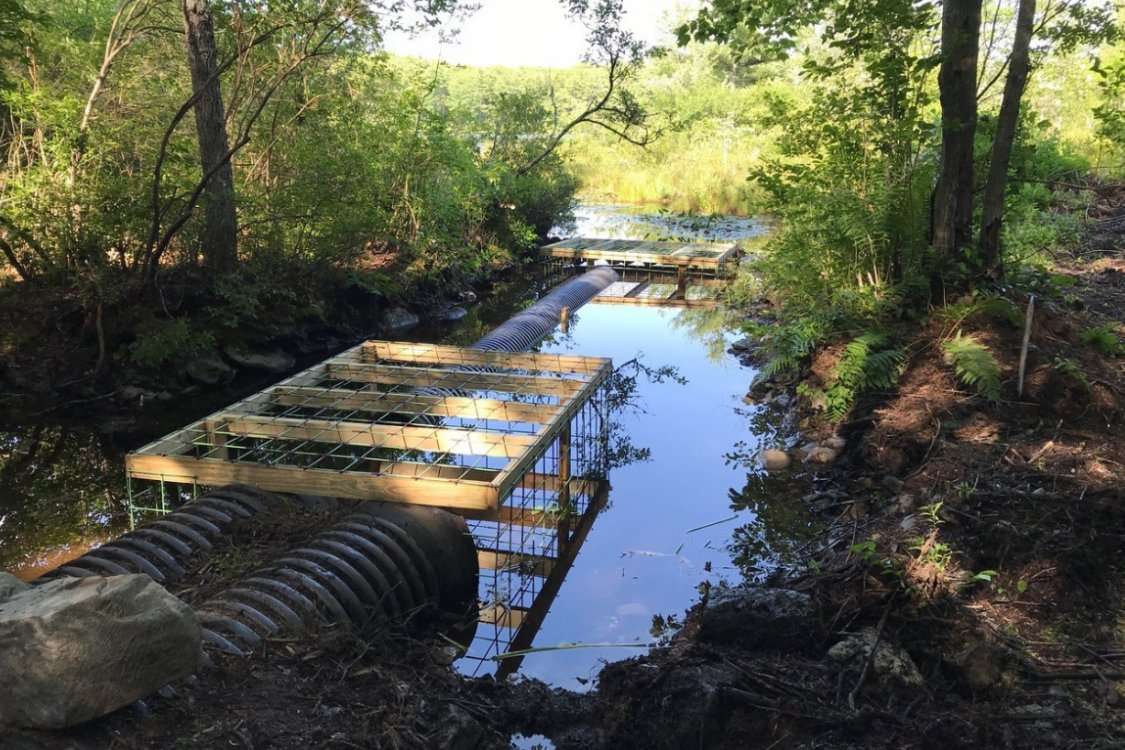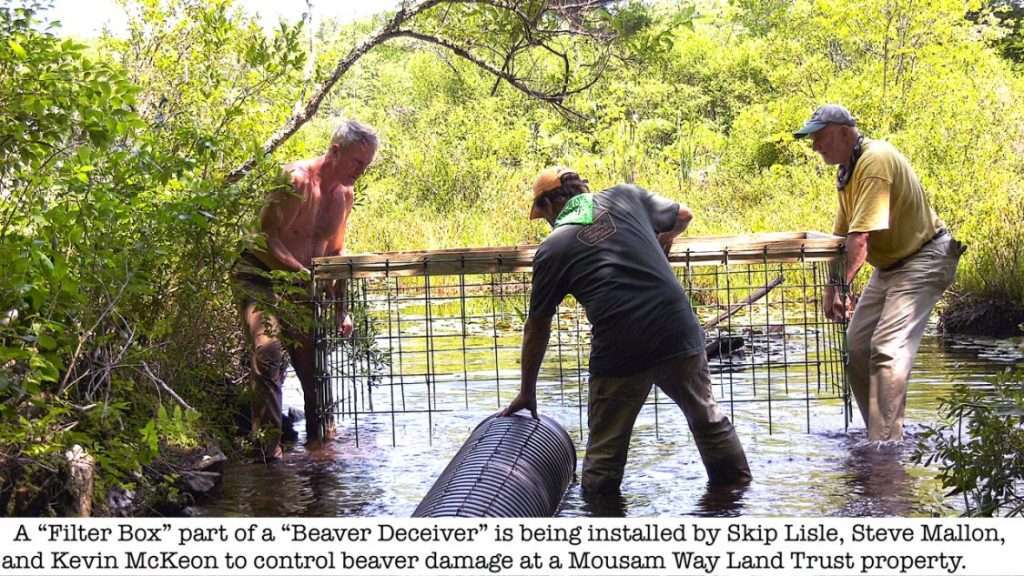New Beaver Control Device at Deering Pond

by Kevin McKeon
A joint effort among The Sanford-Springvale Mousam Way Land Trust, The Sanford ATV Club, and the Sanford Trails Committee, is addressing an old and ongoing human/beaver conflict issue: Protect the Deering Pond environment within the Trust’s Hall Environmental Reserve, while also maintaining the integrity of the Sanford Rail Trail. The issue is that during high watershed events, the Rail Trail—which abuts Deering Pond’s wetlands—is being flooded and washed away by the rise in water level of Deering Pond caused by a beaver dam at the pond’s outlet culverts.
The “Cave-Man Styled” solution has been to send Committee and Club volunteers to occasionally clean out the culverts; During spring high water, this needs to be done 2 to 3 times a week. A subcommittee was actually formed to rotate volunteers!
Until now.
Skip Lisle, owner and founder of Beaver Deceiver International, custom-designed and installed a “Flow-Control Device” called a Beaver Deceiver. Solving beaver conflict issues for several decades all over United States, Canada, Europe, and Asia, Skip has devoted his career to educating folks about the value of living with beavers, the wonderful wetlands they create by dam building, and the resultant enhancement of critical habitats.
This paper describes the economical advantages gained by installing the Beaver Deceiver flow-control devices in municipal human/beaver conflict areas. This United Nations report foretells of Nature’s dangerous and accelerated rate of unprecedented decline in amphibian and other species extinction, illustrating the importance of restoring and enhancing these habitats. Beaver Deceivers are engineered to solve the human/beaver conflicts that are inconvenient and costly, while enhancing the local environment by allowing the creation, restoration, and natural maintenance of valuable wetland habitats.
Conflicts arise when beaver activities plug culverts and water flow slows, causing water to rise. This often causes flooding of the road, nearby septic systems, and house foundations; And also causes water damage to basement utilities, furniture, and other low-laying property. Other issues arise when farm and timber lands are impacted by uncontrolled water-level rise. These rises can be mitigated by Beaver Deceiver installations, resulting in an improved environment for both beaver and humans. The surrounding landscape is enhanced by the improvements of habitats populated by a variety of wetland creatures, using the beavers natural instincts to slow the flow of water and create manageable beaver ponds.
Trapping beaver is a short-term, costly, and cruel method, often done in winter when baby beavers—kits—are being raised in their lodges , so they end up starving or freezing in their lodges. But more beaver will soon move in. A culvert is a “beaver magnet”: nothing more than a hole in an already constructed dam (the roadbed) that needs to be blocked. And the lodges can be re-used, thus the beaver has a huge dam without doing too much work, and not too much maintenance is needed to keep their resultant pond intact.
Skip’s Beaver Deceiver was designed to solve Deering Pond’s site-specific factors, like snow-melt, maximum historic rainfall events, and drainage patterns defined by topographical conditions. This site-specific design will actually encourage the beavers to build a dam against this device. It was then built on site and installed at the Deering Pond outlet culverts with help from the Trust and Committee, as part of a larger project funded by the joint Club/Committee grant. Mousam Way Land Trust funded the video production done by WSSR-TV as part of the Trust’s directive to increase the awareness level of how humans exist within our environment—in this instance, solving human/beaver conflicts. The video, currently being edited, will be available soon.








